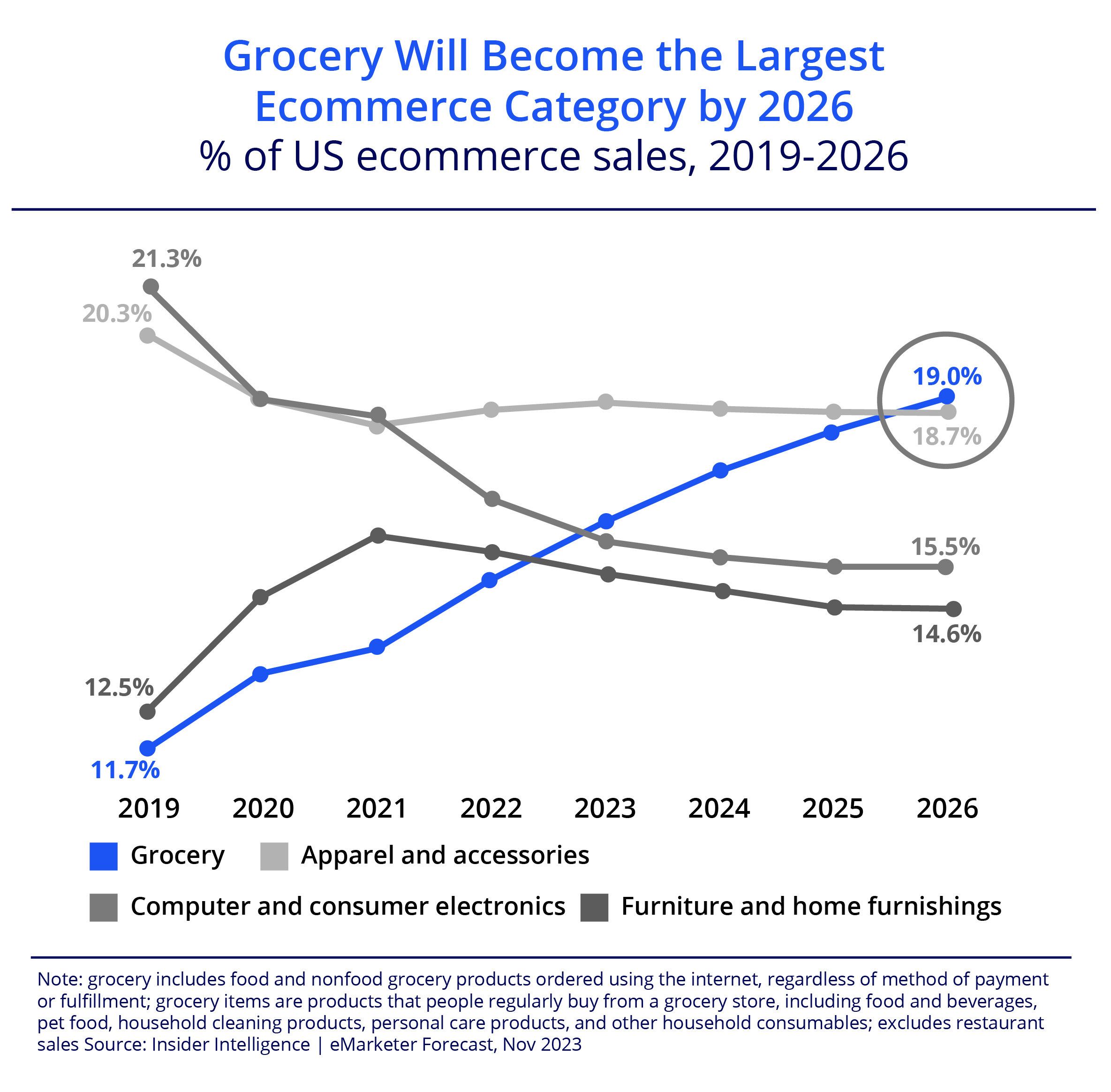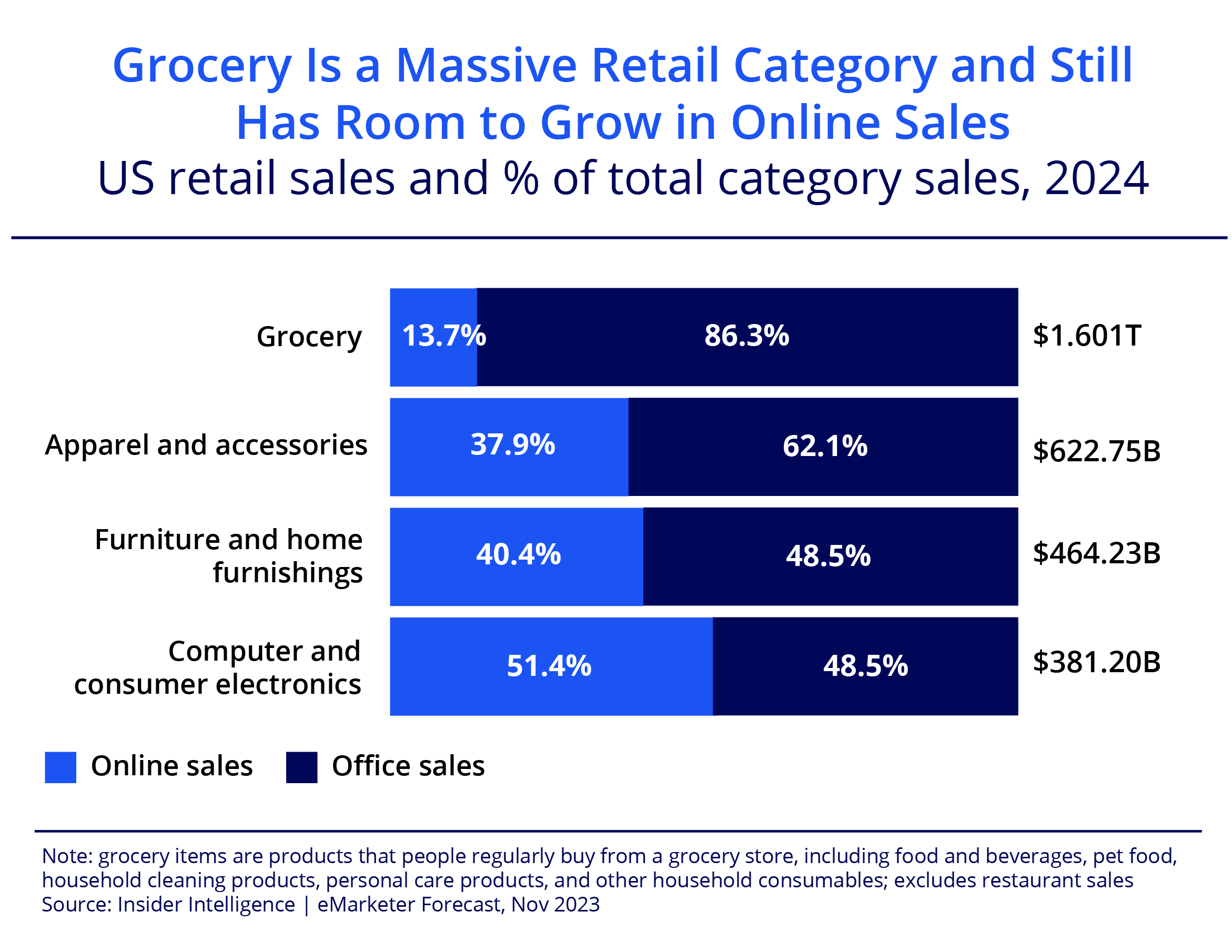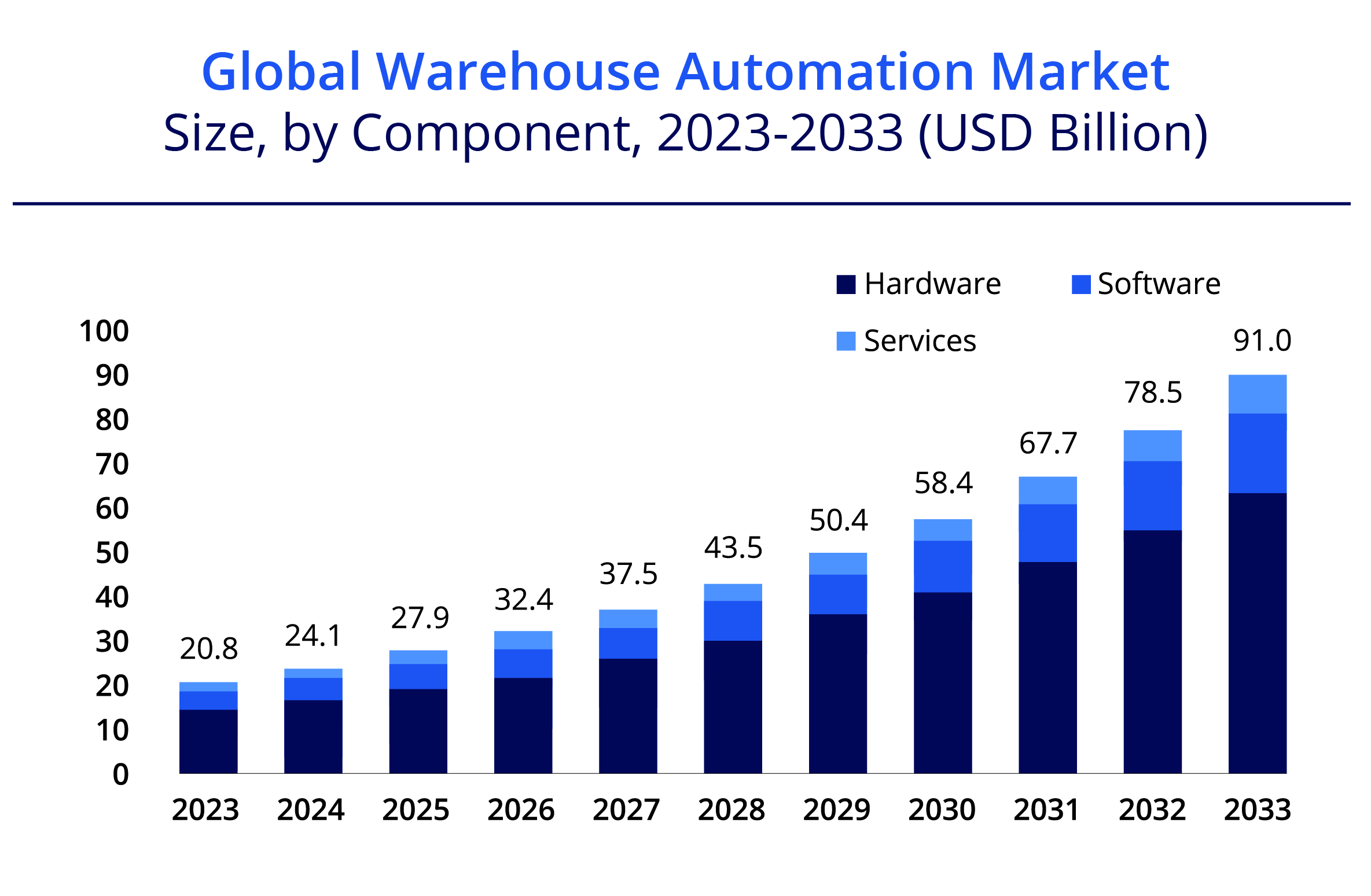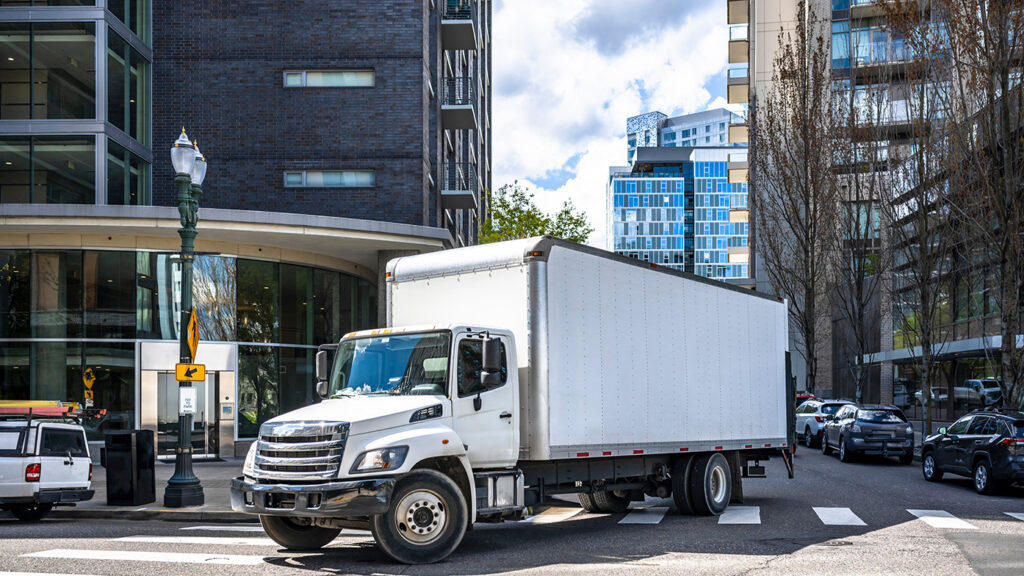The rapid growth of e-commerce, especially in the food and grocery sectors, has had a profound effect on the cold storage industry. As more consumers turn to online platforms for grocery shopping, the need for efficient, reliable, and temperature-controlled storage solutions has increased significantly. Companies are adapting to this shift by enhancing their cold storage facilities to meet the changing demands of e-commerce and logistics. This evolution is not only transforming cold storage operations, but also creating new business opportunities and encouraging advancements in inventory management systems.
The Rise of Food E-Commerce and Its Impact
Food e-commerce has experienced tremendous growth, driven by shifts in consumer preferences, convenience, and the accelerated adoption of online shopping during the COVID-19 pandemic. eMarketer projects that by 2026, online grocery sales will represent 19.0% of U.S. e-commerce sales, surpassing apparel and accessories as the largest e-commerce category. Grocery retailers, food producers, and delivery services now face the challenge of ensuring that perishable goods reach consumers in excellent condition, regardless of distance. Unlike other e-commerce sectors, such as fashion, where products can be returned or exchanged, groceries are rarely returned and expected to be of quality, which puts extra pressure on cold storage infrastructure to perform at the highest level.
To maintain product quality during storage and delivery, companies are investing heavily in advanced cold storage technologies. As a result, e-commerce companies are building more temperature-controlled warehouses and enhancing refrigeration technology. For instance, in 2023, Target committed $7 billion to expand its fulfillment capabilities and enhance in-store experiences, including grocery and perishable food storage. Target’s subsidiary, Shipt, has helped reduce delivery times for refrigerated and frozen items by utilizing a greater number of distribution facilities as outlets.


Expanding Business Opportunities in Cold Storage
The rapid growth of food e-commerce has opened significant business opportunities for the cold storage industry. While the majority of grocery sales will remain offline, the consistent rise in online grocery sales is expected to bring billions of dollars into the e-commerce market over the next few years. For instance, Kroger has entered markets where it lacks physical stores by establishing fulfillment centers that serve customers who may have never visited a Kroger location. This strategy to deliver groceries in areas without physical stores underscores the value of decentralized cold storage facilities, allowing them to reach new customer bases without investing in traditional brick-and-mortar locations.
These strategies underscore the necessity for flexible, scalable cold storage solutions, particularly in urban areas with high demand for online grocery deliveries. This creates a lucrative opportunity for cold storage providers, as businesses increasingly need to lease or build specialized facilities to keep pace with growing e-commerce demand.
Advancing Inventory Management and Streamlining Processes
The warehouse automation market has grown substantially in recent years as companies across industries embrace the advantages of automating supply chain operations. The expanding need for cold storage in e-commerce has further accelerated advancements in inventory management systems. Cutting-edge technologies like the Internet of Things (IoT), artificial intelligence (AI), and machine learning are playing critical roles in optimizing cold storage operations. These technologies allow real-time tracking of perishable goods, forecasting of demand trends, and precise inventory management, helping reduce the risk of overstocking or stock shortages.

AI and predictive analytics assist warehouses in planning their inventory based on consumer behavior and seasonal demand, ensuring a steady flow of goods without unnecessary waste. This level of intel is essential for e-commerce businesses, which must meet tight delivery deadlines while maintaining high product turnover.
Additionally, automation in packing processes is improving the efficiency of cold storage operations. Automated systems help pack and move temperature-sensitive items quickly, reducing the risk of exposure to unfavorable conditions. As packaging, labeling, and sorting processes become more automated, companies can enhance the speed and accuracy of their deliveries, resulting in better customer satisfaction.
Automatic Guided Vehicles (AGVs) also represent a significant advancement in warehouse operations, revolutionizing material handling by improving safety, efficiency, and flexibility. AGVs increase productivity by creating a continuous 24-hour operation. AGVs allow human workers to focus on the more complex parts of their jobs.
Summary
E-commerce, particularly in the food and grocery sectors, is transforming the cold storage industry. With the expansion of online grocery shopping, as evidenced by Target’s grocery growth and Kroger’s delivery strategies, cold storage solutions have become crucial in maintaining product quality and meeting customer expectations. As companies continue to invest in temperature-controlled technologies and streamline their operations, the cold storage industry is poised for ongoing growth, driven by innovations and the rising demand for efficient and reliable solutions in an increasingly digital world.

 Lauren Pace
Lauren Pace Craig Hurvitz
Craig Hurvitz Ronna Larsen
Ronna Larsen


 Tom Golarz
Tom Golarz Michael Golarz
Michael Golarz
 Brewster Smith
Brewster Smith